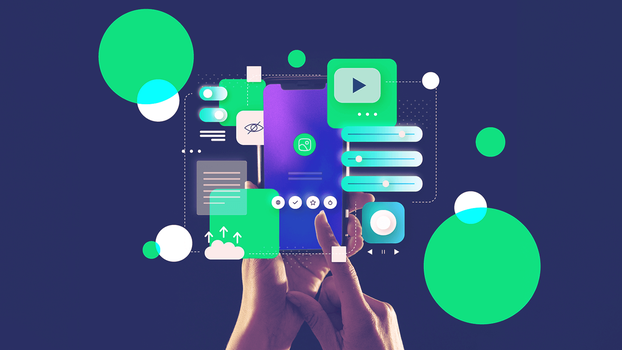Developers at Luminary follow industry best practices along with some home grown practices to cater to our wide range of clients and their requirements.
We have extensive experience working closely with client-side teams to enable a smooth handover and we endeavour to equip you with the tools and knowledge to achieve your desired level of self-sufficiency in the ongoing maintenance and growth of your digital assets.
Developers at Luminary are certified in their platform/s of choice and continue to renew these certifications to keep up with the current best practices on those platforms. Our current team also includes five platform MVPs, with CTO Andy Thompson (Kentico and Kontent.ai MVP), Technical Director Emmanuel Tissera (Umbraco), Solutions Architect Mario Lopez (Umbraco), and Senior Developer Ynze Nunnink (Optimizely).
In addition, Luminary has eight developers who are certified on the Azure platform, while a further 11 developers have certifications on CMS platforms which primarily run on Azure infrastructure. Our Quality Assurance team also has two members who are certified by the International Software Testing Qualifications Board (ISTQB). These testers work hand-in-hand with our developers to make sure that work is delivered to the highest standards.
How we do web development
Front end development
Luminary has a large team of dedicated Front End Developers (FED), ranging from intern, through Senior, Lead, and Front End Architect level. Our FED team is regularly trained in cross-discipline topics ranging from UX and UI design concepts, through to the same robust software development practices followed by our back-end team, as well as OWASP and security training. The team also has a strong focus on WCAG accessibility to level AA, as well as performance considerations such as Google’s Core Web Vitals metrics.
Thanks to close collaboration with our UI Design team, every project our FED team builds is based on a design system, and built in a modular, componentised way. Where there is no design system supplied by a client with their brand guidelines, Luminary will use our own proprietary design system, which represents decades of best practice, UX, accessibility and cross-browser testing in a set of base components ready to be extended and customised.
React.js is Luminary’s primary choice of front-end library. Every one of our developers is trained extensively in advanced React development, and it’s a core skill for our team. Additionally, Luminary boasts strong skills in Next.js and Astro, further enhancing our front-end development capabilities.
Back end and integration development
Luminary’s team of 20+ back-end developers specialise in .NET development, DXP implementation, and custom integrations. Our developers and Solution Architects have integrated a range of leading .NET DXPs with all manner of third-party systems, both integrating from within the DXP via custom code with external APIs, and exposing robust, secure, well-documented RESTful APIs for other applications to integrate with.
We have very strong experience implementing secure, high-performance .NET WebAPI interfaces. These typically present a REST interface with full Swagger documentation. Our developers work with tools such as Postman, and also with our dedicated QA team, who are ISTQB certified testers and trained .NET developers.
Cloud native and API first
Our API-first development methodology is a cornerstone of our strategy. By prioritising APIs, we ensure that the functionality of the application is accessible and reusable across different platforms. This approach makes it easier to introduce and modify functionalities, allowing for seamless integration with other systems
Automated testing and continuous integration
Continuous delivery – All deployments are automated via CI/CD pipelines, with no reliance on manual processes.
Real-time monitoring – Real-time monitoring employed to alert our team to any issues upon deployment.
Phased deployments – Deployment artefacts are deployed one by one to each individual environment in a chain, to ensure quality and minimal disruption.
Automatic validation – Automated tests ensure that each release is functioning as expected in the target environment before it can be released further along the chain.
Security-first mindset
Best practices – From a website standpoint, we make sure that our work addresses all OWASP Top 10:2021 (latest), OWASP API Security Top 10:2023 and adheres to industry best practices.
Static code analysis – Luminary uses ReSharper to provide continuous code quality analysis and Snyk to analyse vulnerabilities in open source packages and provide remediations.
PII data – We minimise the collection of Personally Identifiable Information (PII). If PII is collected, we make sure we follow industry best practices when handling it.
Data encryption – Application data is encrypted at rest and transmitted securely. Offline data is also a security consideration.
Documentation
Being an agile organisation, developers at Luminary value working software over documentation, but we still ensure documentation is covered off for our clients.
Agile documentation practices followed by Luminary developers:
- User story acceptance criteria
- Comments in JIRA with links to code commits
- Readme files
- Project wiki to capture learnings and best practices
- ‘Just-in-time’ documentation
- API Code generators
- Self-documenting code with clear and meaningful naming conventions.
Training and handover
Continuous training & handover – Throughout the project, sprint-by-sprint, we ensure our clients are trained on all features, and provided with access to all documentation.
Final handover – At the completion of the initial build phase, and prior to launch, we carry out end-to-end, facilitated handovers with our key clients to ensure a complete handover.
Launch and post-deployment support
During the immediate launch period and post-deployment, Luminary provides hyper-care support services to rapidly address any user issues, errors, or concerns.
Handy resources
Check out the handy resources below for downloadable guides, checklists and templates to help you achieve your digital goals.

8 min read
How to choose the right CMS
You’ve decided you need a new Content Management System – but where do you start in deciding which one to go with? Here, we distill our learnings over the past two decades of advising clients on choosing digital platforms. We’ve even included a downloadable comparison matrix for you to rank contending CMS or DXP options.

9 min read
Building a martech stack
Selecting a martech stack can be overwhelming. The right mix of products can be the make or break of an organisation’s digital strategy. Here, we share our insights and tips from many years of assisting clients with this daunting task. We also include our downloadable Martech Audit Matrix for you to audit your existing stack.

10 min read
WTF is GEO? A guide to staying visible in AI search
Feeling overwhelmed by all the new acronyms flying around in search and content marketing? You’re not alone. From GEO to AIO and AEO to SXO, it’s hard to know what’s what – and what you actually need to focus on.

6 min read
How to create a digital strategy roadmap
A good strategic roadmap not only outlines what you want to achieve with your digital strategy, but sets out the detail of how you're going to get there. Here we provide guidance on how to do it, along with a downloadable Digital Roadmap Toolkit.

5 min read
How to perform a website audit
Conducting a website audit sounds like a really big, scary, time-consuming chore, but it doesn’t have to be. We’ve simplified the task for you with six key areas to assess – along with a downloadable checklist full of useful questions, tips and tools.

6 min read
How to brief a digital agency
Whether you’re briefing your existing agency or inviting new agencies to respond to a request for proposal, there are certain ‘rules of the game’ that will help you drive the best possible result. This blog post features a downloadable digital agency briefing template to help you get off on the right foot.

The Marketer's Guide to Headless CMS
Everything you need to know if you're considering migrating your website from a traditional CMS to a headless CMS.

A Guide to Digital Product Design
Everything you need to know if you're considering developing and launching a digital product.

5 min read
Why conducting a content audit is essential
Performing a content audit is a crucial step in optimising a website's performance. It can help identify outdated or irrelevant content, identify content gaps, improve SEO efforts, enhance user experience, and save time and resources.






